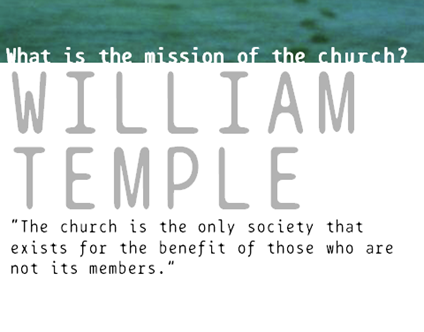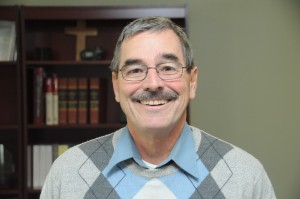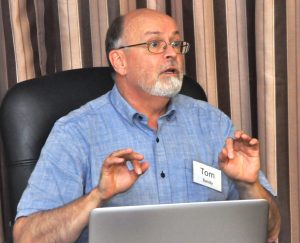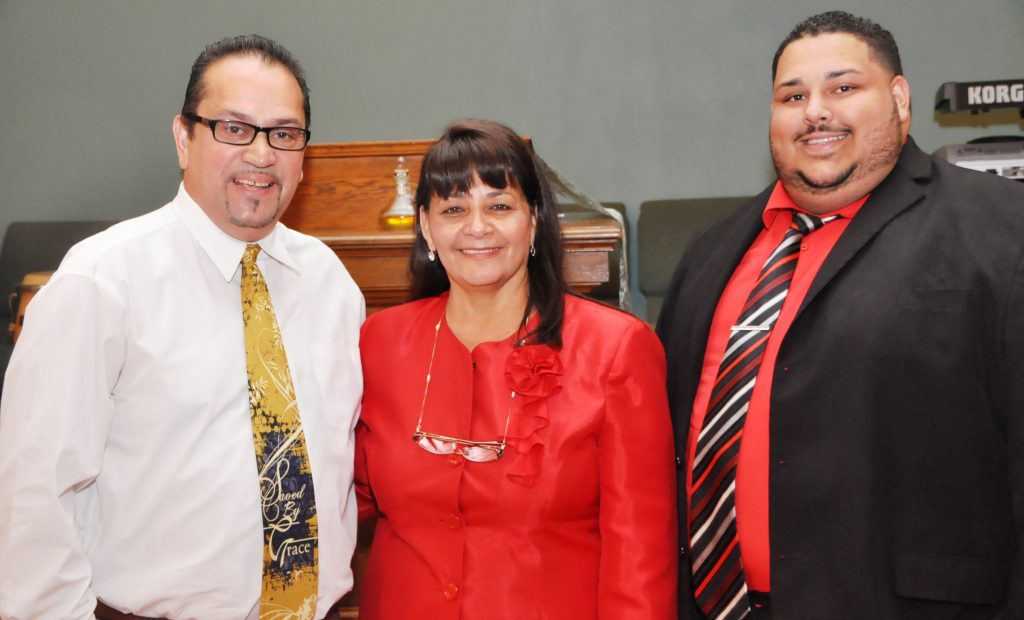
 PART 1
PART 1
What is happening in growing new churches and redeveloping existing churches? A lot!
I remember when I went to Annual Conference in the early 2000s and heard what new church development had become. We had changed the initial paradigm of developing new churches from the traditional “parachute drop,” where an appointed pastor descends on a community fully resourced to create a new church from scratch, costing a million dollars in full-elder compensation, land and building construction. Now it became a group meeting in a school or diner or an existing church with no immediate expectations of having a full-time pastor or land or buildings.
We were mixing clergy elders and lay ministers to lead these new churches. In fact, we couldn’t afford the compensation package for an elder; so we became more dependent on using part-time lay pastors. In reality, our dollars had dried up and we couldn’t afford the traditional way. So finances were forcing us back to our origins of lay-led grassroots ministries, which is not necessarily a bad thing. Perhaps, God is taking us back to our roots, and we are headed back to the future.
One of the realities of ours and many other conferences is the nature of who we have become. Making disciples of Jesus Christ for the transformation of the world may be our mission, but in too many churches maintenance and survival have become the priority concern. Yes, there are some growing churches that are striving to call, equip and send forth world-changing disciples, but only a precious few.
Growing churches must create and be fruitful to multiply. They must:
- increase their worship attendance,
- increase the number of new believers making confessions of faith,
- increase mission giving and create new ministries outside the walls of the church,
- create small groups and new ministries inside the church
- address the needs and interests of people whose lifestyles predominate in the community, and
- create adaptive leadership and Ministry Action Plans (MAPs) based on spiritual formation in healthy environments.
What can we do to create an environment where making transformative disciples becomes our priority and our passion, true to our Wesleyan DNA? Churches, as well as conference and district leaders, must go back to abiding in Christ by spending time in spiritual formation. Unless we are spending a huge amount of time growing together in the Spirit of Christ we will never develop the environment to make the adaptive changes and develop the MAPs needed to grow.
Learning to see each other for who we are, through the eyes of Christ, will break down the silos and barriers we have at times unwittingly constructed that restrict the flow of the Holy Spirit. For example, I do not join the choir just to sing, but I join to grow as a disciple who enjoys and ministers to others through singing. I do not become a trustee primarily to look after the church property but to grow as a disciple who serves Christ as a faithful steward caring for the church’s property.
For this reason, we have brought SLI, Spiritual Leadership, Inc., into our conference to introduce our Cabinet and leaders of our large-membership churches to the process for creating spiritual formations that lead to healthy environments resulting in adaptive ministries. I myself am being trained as a coach in this process to eventually help all willing members of our conference to learn and implement anew this “old” way of doing church. It really goes back to our Wesleyan roots and the roots of our early church chronicled in Acts.
PART 2
When we are spiritually ready to make disciples, we will need to do another fundamental shift in how we do ministry. Our world is changing so quickly that the church is at least a generation behind in reaching new people for Christ.
Here is the first fundamental change: We do not have a pastor for our congregation. Here is the second: The congregation does not exist for itself.
Let me repeat the first: “We do not have a pastor for our congregation.” And the second: “The congregation does not exist for itself.”
The third fundamental shift is we no longer sit and wait for our community to come to us, but we go out into the community to reach others. As a result of these changes, our Staff-Parish Relations Committee wants a pastor who focuses not primarily on the needs of the congregation but on the needs of the community. (Good luck with that appointment, Cabinet!)
Let’s take worship as an example. Many churches fight over whether or not to implement a contemporary service (whatever your definition is of that word), versus a traditional or a blended service. Heated debates are overheard in meetings and in hallways and parking lots afterwards. These battles are internal disputes based mostly on members’ preferences. The real struggle should be to serve the people in our community by providing the types of worship experiences they want.
Yes, you can keep doing what you are doing but also add new worship experiences to appeal to non-members. There are people in your community no doubt looking for help with addictions. They don’t want to be preached to, but instead they want enter into conversational worship. Or they want a healing worship experience where love encourages change and reconciliation occurs.
 This is where MissionInSite and consultant Tom Bandy come into focus. It’s a matter of asking, “Who is my neighbor?” We need to know our communities, and a keen, research-based understanding of local demographics is crucial to that knowledge.
This is where MissionInSite and consultant Tom Bandy come into focus. It’s a matter of asking, “Who is my neighbor?” We need to know our communities, and a keen, research-based understanding of local demographics is crucial to that knowledge.
But how do we translate that knowledge into ministry? Bandy does the work for us, helping us to understand the 71 discovered lifestyle segments out there and what they are each looking for. Once we define community, we must send disciple-teams out to look, listen, taste and feel the lifestyles, needs and energies that pulsate daily in places where our neighbors congregate—coffee shops, restaurants, bars, grocery stores, parks and recreation areas.
We need to have conversations and make observations within the community. As we examine and discuss the information and insights we gain, we need to be able to take a good look at who we are as a church. What are our lifestyles, needs and energies, our strengths and weaknesses, and our assets and possibilities?
Do we have the right pastor and leadership to serve not just our church but our community? For many this may be a whole new way of rethinking and redoing church. Our conference’s Congregational Development Team (CDT) is putting together a team trained by Tom Bandy to help teach, resource and advance this process.
This brings us to Lifetree Café, our innovative, outwardly focused mission initiative created by Thom and Joani Schultz at Group Publishing. Our first step out of the walls of the church into the community should be places where people gather to interact and live their lives. We need to be in those places—coffee shops, restaurants, pubs, etc.— offering a non-threatening but appealing ministry of fellowship and faith-sharing such as the Lifetree Café.
It is a one-hour conversational time that uses short, interesting, topical videos and friendly, open discussion in a non-dogmatic, non-judgmental environment. For me this is a seed-spreading time to reach people we don’t see in our churches.
I am currently working with Lifetree Café, Inc., to develop a beta-model where we can franchise many new groups to hold gatherings in our conference at a reduced rate. Training events are being held regularly to get more of our churches on board with this bold, new outreach strategy. We have two vibrant cafes in Lititz and Lebanon, created since last fall, where pastors and volunteers from several churches are working and investing together in this promising venture. Others are in the planning stages.
I know we have churches starting and growing ministries that move outside their walls into the community. New Birth (Nuevo Nacimiento) UMC in Lebanon is operating house churches where prayer and Bible study happen weekly in the community. Jeremy Graef created Ember, which meets for creative worship Sunday nights in a Lancaster art studio. The Rev. Michael Johnson has a group meeting at Moravian Seminary. Our affiliated campus ministries at Drexel University, Millersville University and Lebanon Valley College hold regular worship services and other events on campus, welcoming students of various faiths to enjoy the koinonia experience.
We are not abandoning the movement to grow large churches. New Birth is our largest Latino church in the Northeast Jurisdiction, already outgrowing its space for Sunday worship. We are working with Lutherans to create a bridge ministry that could ultimately enable New Birth to relocate to one of their churches.
Congregational Development wants to partner with churches who know, or want to know, how to make disciples who can transform the world. Our partnership with Discipleship Ministries’ Path 1, a program to resource church planting, is enabling New Birth to train future Latino pastors in starting new ministries. While one such individual may leave to develop a new ministry in the Susquehanna Conference, another will help plant a much-needed Latino ministry in Reading, Pa., thanks in part to our investment.

We are undergoing a radical change in how we do and invest in ministry. People, including lay people, who have a vision of a new way to reach others for Christ must excite and organize others to grow that vision into reality. Get it started and then come to CDT to share what is happening, and ask us to come alongside to help.
Our search for new, creative ways to grow the Body of Christ may link us to other conferences or denominations or even take us to other parts of the world. With support from our Bishop and Connectional Ministries Director, the CDT is helping to take the successful model of a pastors training school in Kenya across the border to Tanzania, where fledgling United Methodist pastors direly need such training. The mission of the school in Kenya was “to teach to reach a million new people for Christ.” Wouldn’t this be a great vision for the pastors and churches in Tanzania?
Actually, wouldn’t this be a great vision for pastors and churches in the Eastern PA Conference?
